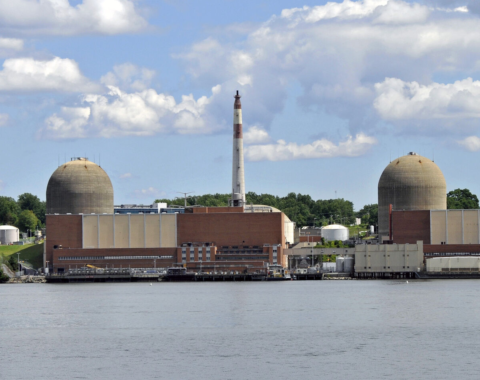 A novel nuclear power plant that will float eight or more miles out to sea promises to be safer, cheaper, and easier to deploy than today’s land-based plants. In a concept developed by MIT researchers, the floating plant combines two well-established technologies—a nuclear reactor and a deep-sea oil platform. It is built and decommissioned in a shipyard, saving time and money at both ends of its life. Once deployed, it is situated in a relatively deep water well away from coastal populations, linked to land only by an underwater power transmission line. At the specified depth, the seawater protects the plant from earthquakes and tsunamis and can serve as an infinite source of cooling water in case of emergency—no pumping needed.
A novel nuclear power plant that will float eight or more miles out to sea promises to be safer, cheaper, and easier to deploy than today’s land-based plants. In a concept developed by MIT researchers, the floating plant combines two well-established technologies—a nuclear reactor and a deep-sea oil platform. It is built and decommissioned in a shipyard, saving time and money at both ends of its life. Once deployed, it is situated in a relatively deep water well away from coastal populations, linked to land only by an underwater power transmission line. At the specified depth, the seawater protects the plant from earthquakes and tsunamis and can serve as an infinite source of cooling water in case of emergency—no pumping needed.
An analysis of potential markets has identified many sites worldwide with physical and economic conditions suitable for deployment of a floating plant. For example, regions of East and Southeast Asia have limited indigenous resources, a high risk for both earthquakes and tsunamis, and coastal populations in need of power. Countries in the Middle East could use OFNPs to fulfill their domestic needs, freeing up their valuable oil and gas resources for selling. Some countries in coastal Africa and South America rely on power supplied by generators running on imported diesel fuel—an expensive and highly polluting way to go. “Bringing in an OFNP, mooring it close to the coast, and setting up a small distribution system would make a lot of sense—with minimal need for infrastructure development,” says Buongiorno.
“More than 70 new nuclear reactors are now under construction, but that’s not nearly enough to make a strong dent in CO2 emissions worldwide,” says Jacopo Buongiorno, professor of nuclear science and engineering (NSE) at MIT. “So the question is, why aren’t we building more?”
The proposed Offshore Floating Nuclear Plant structure is about 45 meters in diameter, and the plant will generate 300 megawatts of electricity. An alternative design for a 1,100 MW plant calls for a structure about 75 meters in diameter. In both cases, the structures include living quarters and helipads for transporting personnel, similar to offshore oil drilling platforms.



